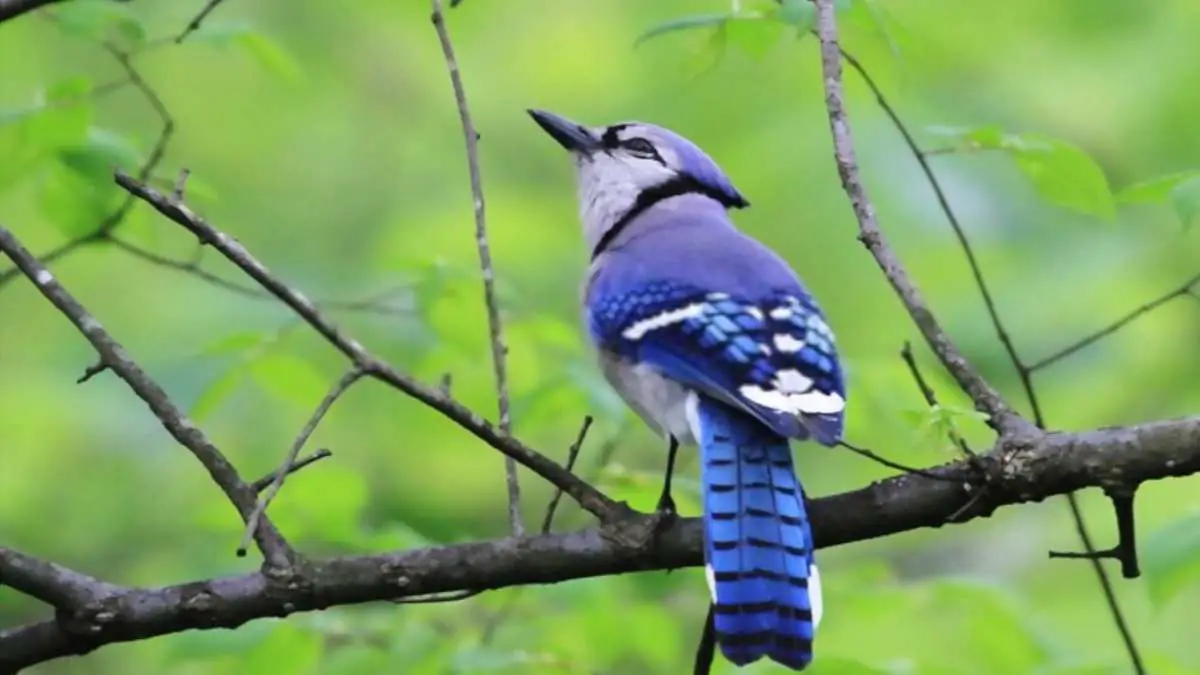If you’re keenly trying to attract blue jays to your garden, you might be wondering “what do blue jays eat?”
Blue jays eat insects, fruit, nuts, seeds, and occasionally even eggs and baby birds.They are good for a balanced eco-system and are beautiful, intelligent birds, with amazing coloration and a range of songs.
What Seeds Do Blue Jays Eat?
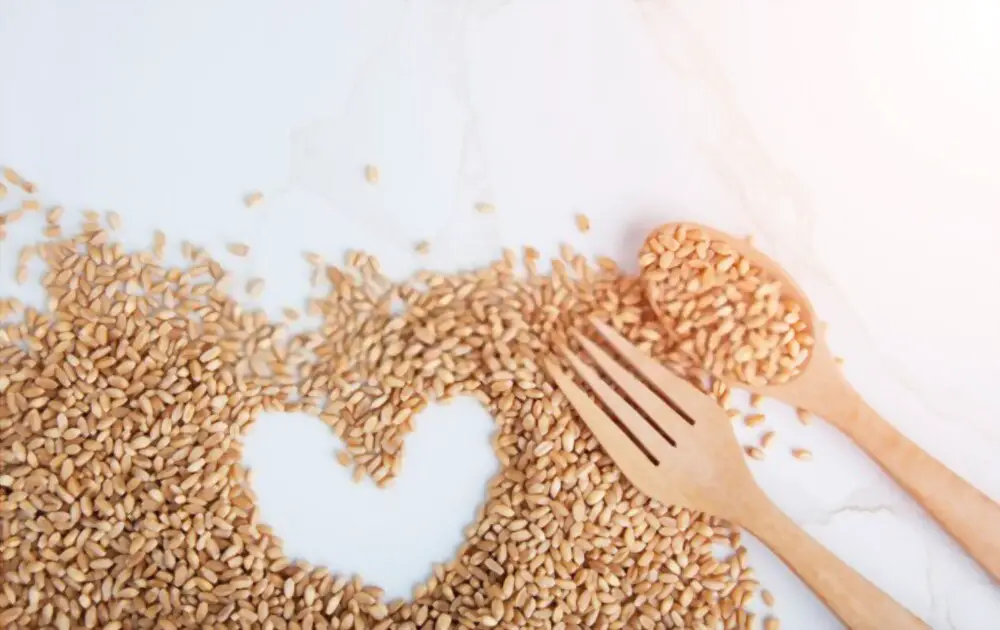
Blue jays love sunflower seeds, and are perfectly capable of shelling them if you don’t provide shelled seeds. They will also eat other kinds of seed, so you can offer a seed mix or spread out things such as millet, wheat grains, etc.
While not a seed, they also love corn kernels and will eat these with great enthusiasm, very quickly.
You might be amazed by how fast they can devour corn, and how much they can get into their beaks in a single feeding session.
It’s important to note that if you want to feed blue jays in your garden, you will need a feeder that is suitable.
They are large birds and cannot feed on many of the traditional tube feeders, no matter how tempting the food in them is.
They need a larger feeding station and prefer to have an open space they can jump around on.
If you pour a seed mix out onto a tray, you’ll have the perfect feeding habitat for blue jays, and you’ll soon learn which seeds are their favorites – because these will disappear fast.
Related Post
Do Blue Jays Really Mate For Life?
What Nuts Do Blue Jays Eat?
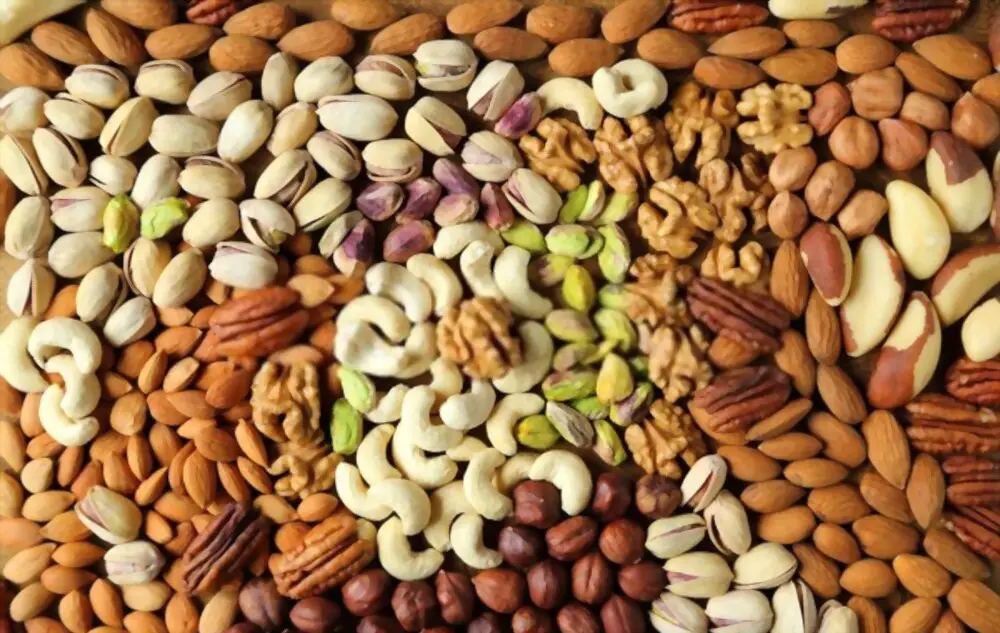
These bright birds also eat nuts. They are fond of acorns and beechnuts, so if you have either of these trees in your garden, they will be very happy.
They will also have plenty of places to perch and nest, which they will need if they are going to visit your garden regularly.
They also enjoy peanuts (technically a legume). They can get them out of their shells, or will take shelled nuts readily.
Not many birds are capable of cracking open the tough shells, so this can be interesting to watch. Most blue jays are extremely fond of peanuts and will fly back and forth to a feeder that has them.
They will stand on the shell to hold it still, and then use their powerful beaks to break it open so they can get at the nut inside. You might observe them using this technique with other foods too – e.g. caterpillars inside cocoons.
Often, you may observe blue jays burying rather than eating these, with the intention of saving them for hard times. They will frequently forget where they have buried them.
If you notice oak trees popping up in your yard, you may have the blue jays to thank for it! They are thought to be very helpful in the spreading of these trees.
What Insects Do Blue Jays Eat?
Blue jays feed on a lot of insects, such as caterpillars, grasshoppers, moths, beetles, and all sorts of other bugs.
These may make up around a quarter of a blue jay’s diet, which means they can be very useful for removing pests from your garden.
If you have a caterpillar infestation, blue jays are a wonderful natural solution!
If you see a blue jay thrashing a caterpillar around through the air before it eats it, you might be wondering what it’s doing. The answer is that it’s probably removing irritating and prickly spines before it swallows the caterpillar!
You can supplement a seed and nut mix with mealworms if you like. Just make sure the tray has high sides so the mealworms are trapped on it.
During the winter, blue jays tend to eat fewer bugs, as they are harder to find and there aren’t as many around.
You may want to increase other food sources to make up for the deficit and ensure your blue jays are getting enough food.
What Fruits Do blue Jays Eat?
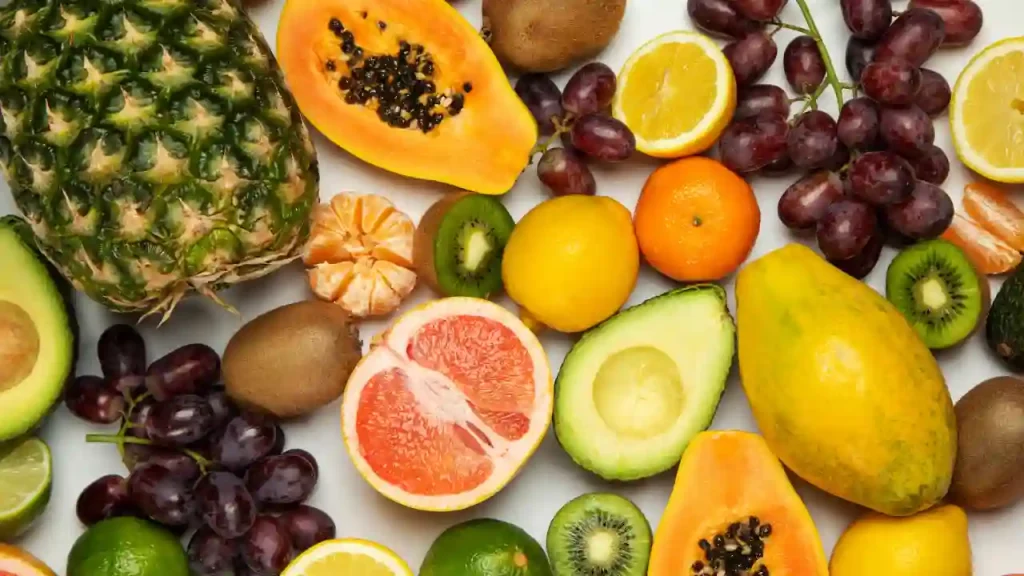
Blue jays seem to mostly enjoy berries and small fruits. You may want to cut up a selection to put on the tray so you can see what they choose and what they leave.
They won’t take anything they don’t like; they are intelligent birds and consider their foods carefully.
They enjoy berries, and if you have a fruit-bearing bush in your garden, they will certainly investigate it.
Try placing raspberries and blackberries on the feeder, or offer some small pieces of strawberry. Blueberries are popular with many kinds of birds.
What Other Kinds of Food Do Blue Jays Eat?
Less commonly, blue jays will go for meats. They are scavengers when they have the opportunity.
They will eat carrion, and they will also sometimes attack the nests of other birds, eating the eggs or even young chicks. Because of this, their presence in a garden may make other birds nervous.
You might be amazed to learn that they can even hunt mice and frogs.
They are reasonably large birds, and will take on almost anything they can tackle. Once you’ve seen a blue jay swallowing a frog, you’re unlikely to forget it!
You probably won’t want to put these things out on a feeder, but if your garden has a good variety of life, you’re more likely to see these amazing birds.
Feeding Tips For Blue Jays
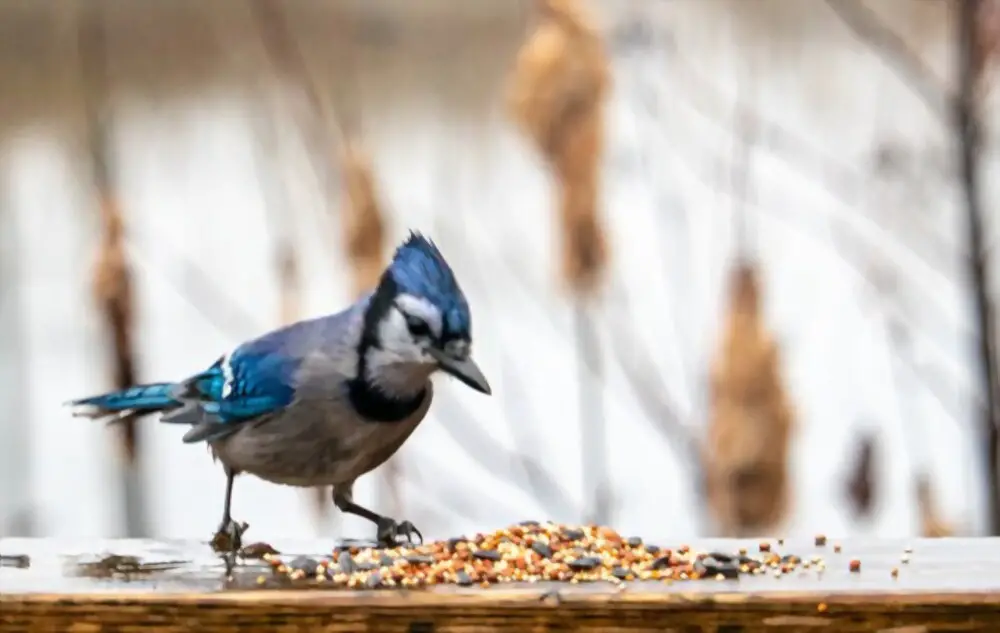
- Blue jays prefer ground feeder or large bird feeder. You can even keep seeds on ground to attract them.
- Blue jays feel safer when they can sit around a tree for cover and then eat, so place your blue jays feeder accordingly.
- If you like seeing blue jays eating, don’t site near the feeder. Alternatively, watch them through your window.
- Blue birds enjoy eating from suet feeders, so with seed and grain feeders keep one suet feeder too into your backyard.
- Use acorns, peanuts, corn, and black oil sunflower seeds as their food.
- Make sure to place your feeders nearby water source for them to drink and bath.
- Always clean your feeders regularly to stop any disease spread.
Summary – What Do Blue Jays Feed On?
So, in answer to “what do blue jays eat?” they have very varied diets, and while they are careful about the food they choose, they are not fussy eaters. They will tackle almost anything you can provide, as long as the feeder is suitable for them.
Try open platforms to ensure they can feed comfortably.
Source – forum.americanexpedition.us


